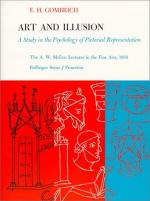|
This section contains 290 words (approx. 1 page at 400 words per page) |

|
1950s: Post-World War II Europe is still recovering from the uncertainties and devastation of the war years. The growth of the Soviet Union and ongoing hostilities between Eastern Bloc countries and NATO lead to the Cold War.
1990s: Although the Cold War ends with the breakup of the Soviet Union in the 1980s, fear and uncertainty continue to dominate the international political scene.
1950s:
Growth of technology as well as the "miracles" of science lead to a general belief in the application of the scientific method to all fields of endeavor, including art criticism and history.1990s: While technology continues to grow at unprecedented rates, there is evidence of some distrust of science, most notable in the critiques of science offered by scholars such as Bruno Latour.
1950s: Gombrich's theories are set forth in the 1956 Mellon lectures, appearing in 1960 as the book Art and...
|
This section contains 290 words (approx. 1 page at 400 words per page) |

|




